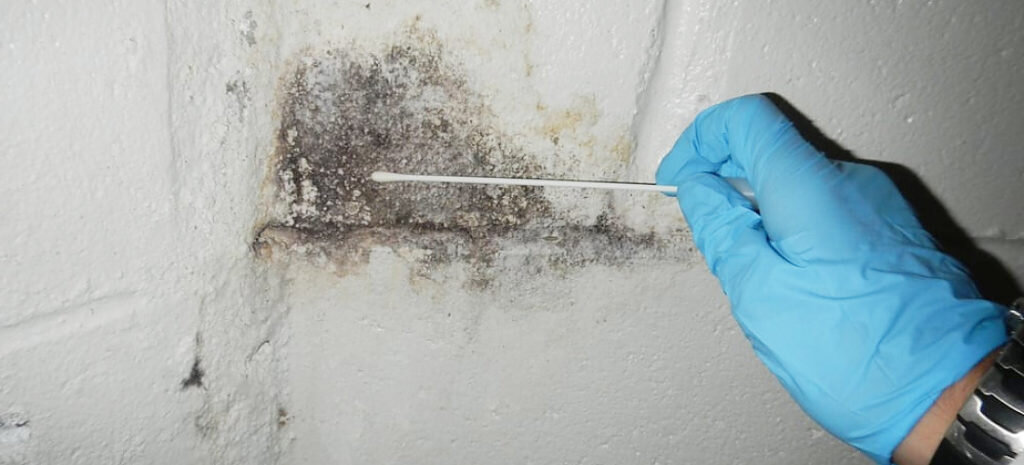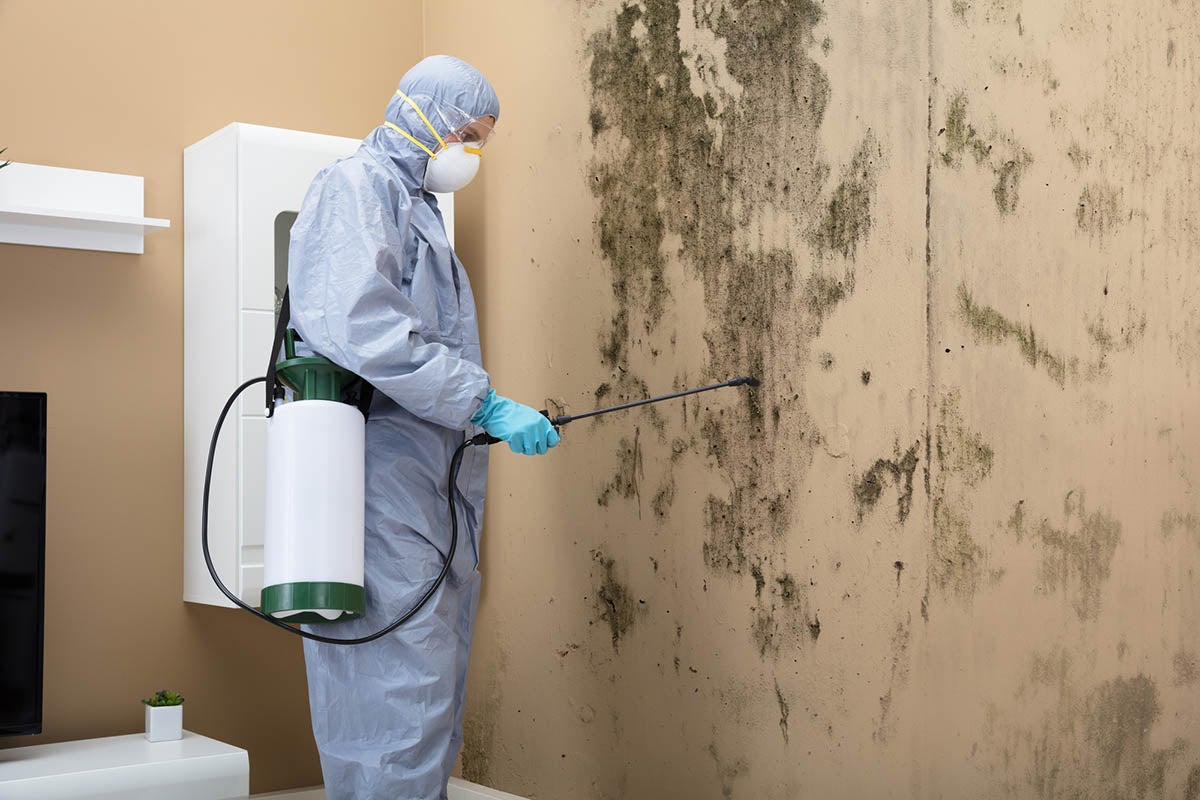After Mold Remediation Methods for Clean Spaces
Wiki Article
Secret Tips for Successful Post Mold And Mildew Removal
Addressing mold and mildew issues in a effective and timely way is vital for preserving a healthy interior setting. Efficiently finishing mold remediation is a complex procedure that calls for attention to detail and adherence to certain methods. From inspecting dealt with areas to executing moisture control procedures, each step plays an important function in guaranteeing the effectiveness of the remediation process. There are crucial post-remediation steps that are just as essential but commonly neglected. These actions not only confirm the success of the remediation initiatives however additionally add to preventing future mold and mildew growth.Inspection of Treated Areas
Upon completion of the mold and mildew removal procedure, a thorough examination of the dealt with areas is crucial to make sure the effectiveness of the removal initiatives. This inspection works as an essential action in the post-remediation stage to validate that the mold and mildew removal and cleanup procedures were successful in eliminating the mold and mildew problem and restoring a safe indoor atmosphere. The examination should be carried out by qualified experts that have the proficiency to examine the remediated locations diligently.These consist of visual analyses to inspect for any indicators of mold development or water damage, moisture degrees to validate that the location is complimentary and dry of excess humidity that might promote mold re-growth, and air quality screening to make sure that the indoor air is secure to take a breath. Additionally, the inspection might include utilizing specialized tools such as moisture meters and thermal imaging cameras to spot covert mold or moisture pockets that can lead to future mold problems if left unattended.

Moisture Control Measures
Efficient dampness control steps are important for preventing mold and mildew growth and preserving a healthy and balanced interior atmosphere. In addition, making use of dehumidifiers in wet areas can help reduce moisture levels, making it harder for mold to grow.Routinely inspecting and keeping the structure's exterior can additionally stop wetness intrusion. Post Mold Remediation Report. Guaranteeing that seamless gutters are clear, downspouts direct water away from the structure, and the roof remains in great condition can assist avoid water from permeating into the structure. Properly securing windows and doors can also aid keep wetness out
Any kind of leaks or spills must be cleaned and dried within 24-48 hours to protect against mold development. By implementing these wetness control measures, the risk of mold and mildew returning can be considerably lowered, creating a much healthier indoor environment.
Appropriate Ventilation Assessment
An indispensable element of making certain a healthy indoor atmosphere blog post mold and mildew removal is conducting a detailed evaluation of the air flow system. what to do after mold remediation. Proper ventilation analysis plays an essential duty in protecting against future mold and mildew growth and keeping air high quality within the affected room. Throughout the evaluation, professionals review the performance of the ventilation system, looking for any kind of clogs, leaks, or malfunctions that can prevent appropriate air movement. It is necessary to guarantee that the ventilation system is effectively sized for the space it offers which it meets market criteria for air exchange rates.In addition, analyzing the air flow system consists of checking out the circulation of air throughout the area to determine any kind of areas of inadequate blood circulation where dampness and impurities could gather. Proper ventilation not only helps in regulating moisture degrees yet additionally aids in getting rid of air-borne mold spores and various other toxins, therefore improving total indoor air quality. By resolving any type of air flow issues post mold and mildew removal, property proprietors can produce a much healthier and a lot more comfortable atmosphere for residents while minimizing the threat of mold and mildew re-infestation.
Cleaning and Disinfection Protocols
To guarantee thorough mold and mildew removal, meticulous adherence to particular cleaning and disinfection methods is crucial. Cleansing and sanitation methods play a vital role in the post-mold remediation phase to avoid the recurrence of mold growth and guarantee a risk-free and healthy environment. The very first step in this procedure is the elimination of any type of visible mold growth utilizing proper cleansing representatives and techniques. It is important to make use of EPA-approved fungicides and anti-bacterials to effectively eliminate mold spores and avoid their regrowth.In addition, executing preventative steps such as using mold preventions and maintaining appropriate air flow can help lessen the threat of future mold invasions. By following stringent cleansing and sanitation protocols, building owners can make sure the successful elimination of mold and mildew and produce a healthy and balanced interior environment for residents.
Surveillance and Maintenance Plan
Applying a routine surveillance and upkeep plan is vital for ensuring the long-lasting performance of mold and mildew remediation efforts. When mold removal is completed, it is important to develop a tracking schedule to examine the success of the removal procedure. This includes routinely examining the formerly affected locations for any kind of indications of mold recurrence or water damage. By conducting routine checks, any kind of brand-new mold and mildew growth can be promptly recognized and attended to, avoiding a reoccurrence of the preliminary trouble.Furthermore, developing an upkeep strategy is key to preventing future mold and mildew problems. This plan might include actions such as dealing with pipes leaks, improving ventilation, and managing indoor moisture levels. Normal maintenance not just assists in preventing mold and mildew however additionally adds to preserving a healthy Post Mold Remediation Report and balanced interior environment. It is suggested to document all surveillance and maintenance tasks to track development and ensure uniformity in the upkeep of the remediated locations. By applying a detailed monitoring and upkeep strategy, the danger of mold and mildew re-emergence can be considerably lowered, promoting a tidy and safe living or workplace.
Conclusion
In final thought, successful message mold remediation includes detailed evaluation of dealt with locations, application of wetness control procedures, assessment of correct ventilation, adherence to cleaning and disinfection procedures, and facility of a surveillance and upkeep strategy. These key steps are essential to make sure that mold and mildew growth is efficiently removed and avoided from repeating in the future. By complying with these standards, home proprietors can maintain a secure and healthy atmosphere for occupants.Upon conclusion of the mold and mildew removal process, a thorough evaluation of the treated areas is essential to guarantee the performance of the removal initiatives. These consist of aesthetic evaluations to check for any signs of mold and mildew development or water damages, wetness degrees to validate that the location is free and dry of excess moisture that might promote mold and mildew re-growth, and air high quality testing to make sure that the indoor air is safe to take a breath. Additionally, the evaluation may involve making use of specialized tools such as moisture meters and thermal imaging cams to detect surprise mold and mildew or wetness pockets that might lead to future mold and mildew issues if left unchecked. By addressing any kind of ventilation issues upload mold removal, residential property owners can produce a much healthier and extra comfortable setting for owners while lowering the danger of mold and mildew re-infestation.

Report this wiki page